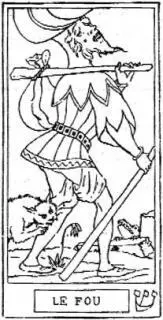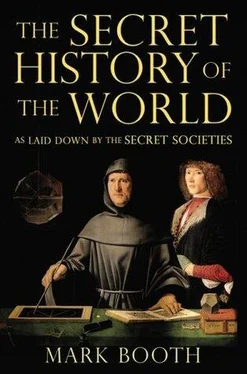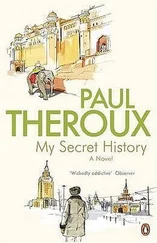FAR AWAY FROM THE GLITTER AND GRANDEUR of the courts of the Italian Renaissance, in the unsophisticated north of Europe another spirit was making itself felt. At the age of twelve or thirteen a young girl, living in a simple, rustic cottage in France in the heavily wooded Loire Valley, began to hear voices and see visions. The Archangel Michael appeared to Joan and told her she would have spirit guides. She was reluctant to go along with this, saying she would rather spin by her mother’s side. But the voices became increasingly insistent. They told her of her mission. When an invading English army seemed about to take the city of Orleans, they told her to go to the nearby town of Chinon to find the Dauphin, the heir to the throne of France, and from there lead him to be crowned at Rheims Cathedral.
Joan was still little more than a child when she arrived at the court of the Dauphin. He played a trick on her, letting a courtier sit on the throne and pretend to be him, but Joan saw through it and addressed the Dauphin directly. Convinced by Joan, he equipped her with a white horse and a suit of white armour. She wore it in the saddle for six days and nights without respite.
Joan saw a vision of a sword hidden in a church. The sword she described — with three distinctive crosses on it — was discovered hidden behind the altar of the nearby Church of St Catherine de Fierbois.
As sometimes happens in history, when great beings from the spirit worlds bring their powers to bear on a particular individual, she could not be denied. Nothing could stop her even though the odds against her looked overwhelming.
When on 28 April 1429 Joan arrived outside Orleans, now occupied by the enemy, the English troops retreated before the young girl and her small band of supporters. Only five hundred of them defeated an English army of thousands in a way which even her captains described as miraculous.
At Joan’s urging the Dauphin was crowned King of France at Rheims. Her mission had been accomplished in less than three months.
It is difficult to think of a clearer example of the influence of the spirit worlds on the course of world history. George Bernard Shaw, who was deeply interested in esoteric philosophy, would write that ‘behind events there are evolutionary forces which transcend our ordinary needs and which use individuals for purposes far transcending that of keeping those individuals alive and prosperous and respectable and safe and happy’.
Betrayed by her own people, Joan was sold to the English. She was questioned closely on her voices. She said they were sometimes accompanied by visions and bright lights, that they advised her, warned her and even gave her detailed instructions, often several times a day. Joan was also able to ask their advice and would receive detailed answers to her questions.
Such easy familiarity, such deep and detailed communications with the spirit worlds outside the aegis of the Church was characterized as witchcraft and on 30 May 1430 Joan was burned at the stake in the marketplace in Rouen in northern France. An English soldier turned to another and said, ‘We have burnt a saint.’
It was as if the great spiritual powers that had made her inviolable had now deserted her and all of a sudden the forces of opposition rushed on her together in order to overwhelm her.
The English thought of her as the enemy, but according to the perspectives of the secret history it would be England that most benefited from the divinely inspired actions of Joan of Arc. France and England had been locked in conflict for hundreds of years and, though at the time of Joan England had the upper hand militarily, it was dominated culturally, in its language and literature, by the French. Without Joan’s severing of France and England, the particularly English contribution to world history — the psychological realism of Shakespeare and the detached and tolerant philosophy of Francis Bacon — would not have been possible.
THE PAINTER ALBRECHT DÜRER WAS returning to Germany following a trip to Italy, where he had been initiated into the esoteric lore of the painter’s guilds. Weird visions of the Apocalypse would begin to inspire his woodcuts. He would also paint a portrait of himself as an initiate, holding a flowering thistle, sparkling with dew, the sweat of the stars, as a sign that his organs of spiritual vision were opening up on a new dawn.
On the way he stopped by the wayside to paint a clump of turf. This watercolour was the first still life ever painted. There is nothing leading up to it in the history of art. Before Dürer no one had really looked at a rock and a clump of grass in the way we take for granted today.
Dürer’s journey should also be taken as a sign that the impulse for the evolution of human consciousness was moving to the north of Europe. Northerners would find themselves at odds with the more narrowly Catholic countries of the south. New political developments saw the rise of newly powerful northern states which would become vehicles for new forms of consciousness.

In The Zelator by David Ovason my friend Mark Hedsel is quoted as giving a fascinating analysis of the iconography of the Fool, whose image appears in the frontispiece to the first edition of Gargantua and Pantagruel in 1532 and also, of course, in the Tarot. The Fool is following ‘the Nameless Way’. The stick across his shoulder represents the vegetable dimension of his being that lies between the spiritual part and the animal part down below, where the dog clawing at his leg represents unredeemed and corrupted animal elements. The unredeemed part of the vegetable body is represented by the burden carried in the sack. His three-pointed hat alludes to the higher bodies he has yet to evolve — the transformed animal, vegetable and mineral bodies — and his upward gaze represents his aspiration towards these. If his beard represents a downward tug, the upward swoop of his hat shows the Third Eye on the point of opening.
FRANÇOIS RABELAIS, BORN TOWARDS THE end of the fifteenth century, walked the narrow streets of Chinon some fifty or sixty years after Joan’s footfalls had died away. His life and work is animated by the spirit of the Troubadors. While Dante, the southerner, had written with a yearning for the spiritual heights, all Rabelais’s delight seems, at first glance at least, to be in the material world. His great novel Gargantua and Pantagruel tells stories of giants rampaging around the world causing havoc because of their gigantic appetites. The joy in everyday objects that had been characteristic of the Troubadors was given a humorous new twist by Rabelais. Gargantua contains a long list of objects you might want to use to wipe your bottom that includes a lady’s velvet mask, a page’s bonnet, feathered in the Swiss style, a cat, sage, fennel, spinach leaves, sheets, curtains, a chicken, a cormorant and an otter.
The long struggle to wake up to the material world that had begun with Noah is finally completed and the result is sheer delight. Love of light and laughter, food and drink, wrestling and love-making drives the densely packed, punchy prose. In the pages of Rabelais, the world is not the terrible place the Church has made it out to be. The Church’s world-denying philosophy is shown to be unhealthy. ‘Laugh and face it out boldly whatever it may be,’ said Rabelais. Laughter, jolliness and good humour were a cure for both mind and body. Both could be transformed.
Rabelais loves the world and in his writing love of objects and love of words go hand in hand. A profusion of things and the coining of new words come tumbling off the page. But there is a sly initiatic undercurrent for those who wish to look for it. Rabelais is a mystic but not in the otherworldly style of the Middle Ages.
Читать дальше













